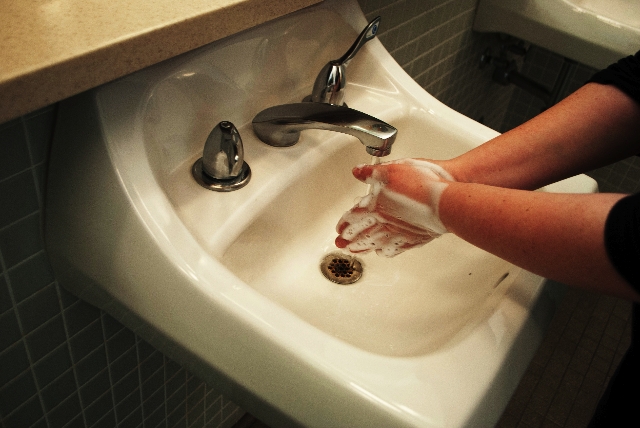Germs, bacteria, microbes, parasites and viruses — we all want to stay away from them, especially during the dreaded flu season. To do so, we often rely on antibacterial soaps to give us peace of mind that our hands are squeaky clean. However, a UC Davis study in collaboration with University of Colorado found that triclosan, a chemical found in antibacterial soaps like Dial, may impair muscle function. Because triclosan has been a concern for both human and environmental health, the researchers evaluated the effects of this common household item on muscle activity in a series of experiments with mice and fish.
“Triclosan weakens skeletal and cardiac muscle contraction by interfering with molecular signals that link the electrical impulses at the surface of the muscle cell to the release of calcium from inside the muscle cell. Interfering with the release of calcium inside muscle cells is absolutely essential for contraction,” said Dr. Isaac Pessah, professor and chair of the Department of Molecular Biosciences at the UC Davis School of Veterinary Medicine and the principal investigator of the study.
Through test tube experiments the researchers discovered that the effects triclosan had on mice and fish were alarming. Within the first 20 minutes of exposure to the chemical, the mice had a 25 percent reduction in heart function. Within 60 minutes of exposure, mice also had an 18 percent reduction in grip strength, which is commonly measured to observe the effects of drugs and neuromuscular disorders. The fathead minnows — small fish that were exposed to the chemical in the water for seven days — had reduced swimming activity compared to the control groups.
“We do not know the extent to which this [skeletal and muscle impairment] happens in humans exposed to triclosan,” said Dr. Kurt Beam, professor of physiology and biology at the University of Colorado School of Medicine.
Although triclosan was originally used to prevent bacterial infections from spreading in hospitals, it is now also commonly found in trash bags, toys, clothes, carpets, bedding, deodorants, mouthwashes and toothpastes. The chemical has also become detectable in waterways, aquatic organisms, human blood, urine and breast milk.
When asked how and why triclosan became readily available for household use, Pessah postulated that the chemical added a value to consumer products.
“[There is] the mindset that antibacterials like triclosan ‘protect your health’ more than plain soap and water and good hygiene,” Pessah said.
According to Dr. Nipavan Chiamvimonvat, professor of cardiovascular medicine at the UC Davis School of Medicine, this study has helped to raise awareness of the widespread use of triclosan.
“Additional studies are urgently required to further assess the short and long-term effects of the compound in human health,” Chiamvimonvat said.




